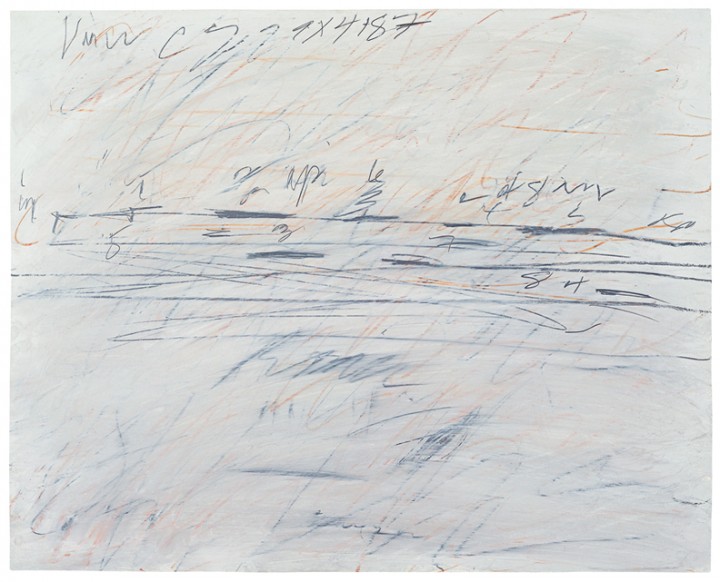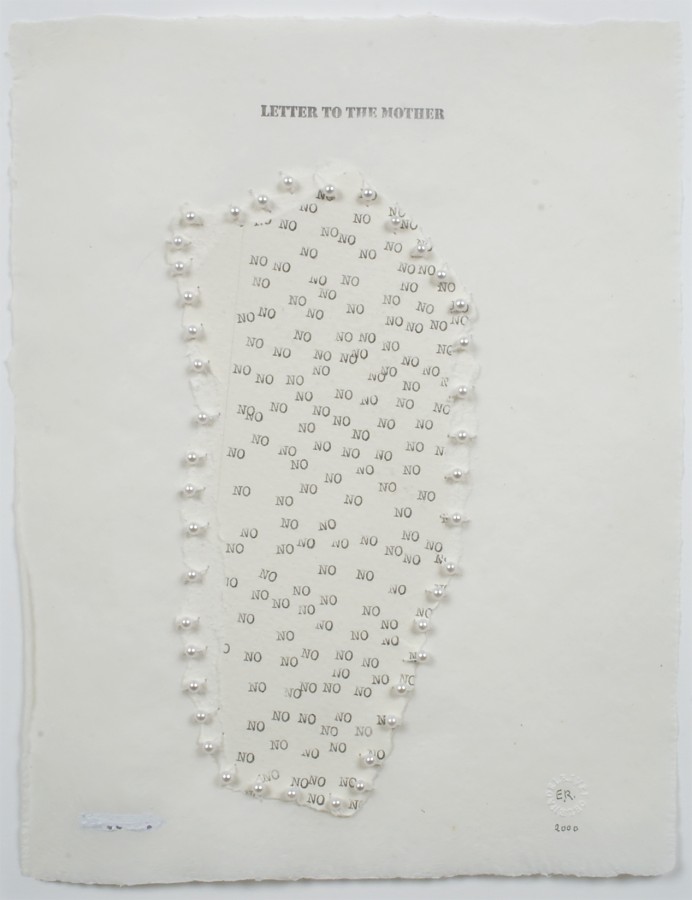
Usually the phrase “reading into things” means something slightly negative: we impose our interpretations on what we experience, inventing ill-fitting meanings. This week, I want to twist the phrase and unearth a positive sense: we can use the act of reading to generate actual “things” (that is, artworks). Usually, we think of words as generating only ideas, but in some languages, the same word means both “word” and “thing.” And what is writing, after all, but a series of squiggles — a complex line drawing, which is a sort of object — that we’ve all agreed about how to interpret?

This transformation from language into art can take many paths. In this exhibition, Elena del Rivero makes forms out of her letters (and here “letters” means both individual characters and the communiqués that she creates from them). Stefana McClure makes ghostly wisps out of the residue of written/typed language — one kind of “impression” leads to another. And I’m endlessly moved by the scrawling drawings of Cy Twombly and Christine Hiebert, in which writing is palpably implied.
What is the feeling you get from your reading, and how can that feeling manifest in a visual form? What feelings — or “readings” — do we get from textual forms themselves? What are the effects of different fonts, and how does the role of typeface as an advertising tool intersect with its role as an artistic medium? What is the impact of textual layout, in its different cultural configurations? Altogether, how can we “read” the “thingness” — or visual dynamism — of material texts? I’m interested in how such questions play out in the artworks (in this exhibition or not), and in our daily lives.
Karen Schiff (b. 1967, New Haven, CT) earned her MFA in Studio Art at the School of the Museum of Fine Arts, Tufts University, Boston (2006), where she won a Drawing Award from the SMFA faculty (2005). Schiff completed earlier degrees at the University of Pennsylvania, in Philadelphia (PhD in Comparative Literature and Literary Theory, 1998) and Brown University in Providence, Rhode Island (AB/AM in Comparative Literature/English, 1989). Schiff has been resident at the Harwood Museum of Art, Taos, New Mexico (2007); the Edward F. Albee Foundation, Montauk, New York (2007); Anderson Ranch, Snowmass Village, Colorado (2011); Yaddo, Saratoga Springs, New York (2012, 2014); and the Helene Wurlitzer Foundation of New Mexico, Taos (2012, 2014), among other institutions. Schiff contributed an artists’s project, Counter to Type, to the Spring 2014 issue of Art Journal. The project included drawings, an essay, and a video about her process. She lectures and publishes about her work in the word/image field, and she also creates projects about artist Agnes Martin. A recent solo exhibition was held at the Flanagan Campus Art Gallery, Community College of Rhode Island, London (2011). Recent group exhibitions include such venues as Hverfisgallerí, Reykjavik (2014), Hafnarborg Museum, Hafnarfjör∂ur, Iceland (2013); Arkansas Arts Center, Little Rock (2012); Danese, New York (2010, 2011, 2012); the Katonah Museum of Art, Katonah, New York (2011); Galería Astarté, Madrid (2010). In 2013 Schiff curated the group exhibition Winter Reading: Lines of Poetry at Diane Birdsall Gallery, Old Lyme, Connecticut. She lives in New York City and has a studio in Brooklyn. More information about her work can be found at www.karen-schiff.com.